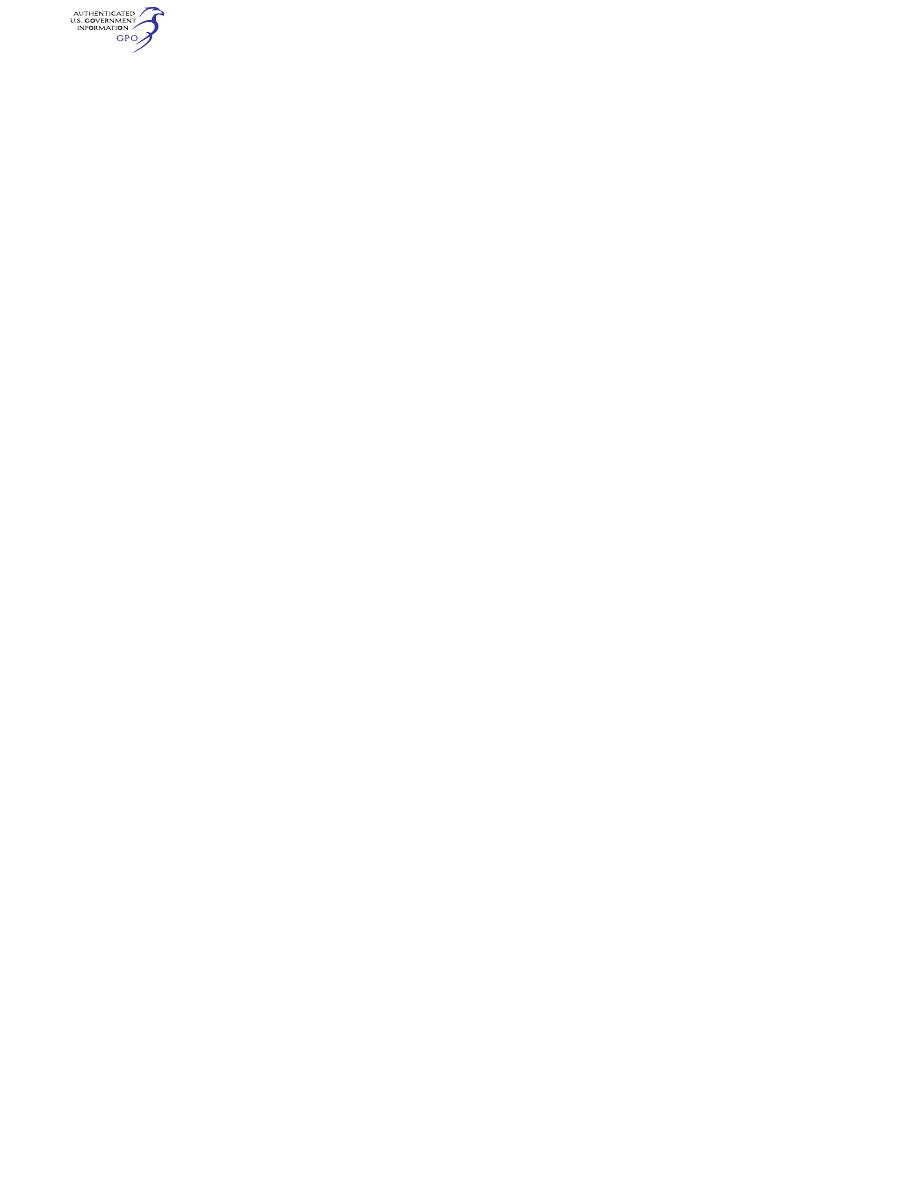
402
14 CFR Ch. I (1–1–24 Edition)
§ 129.113
EWIS Instructions for Continued Air-
worthiness (ICA) that have been devel-
oped in accordance with the provisions
of Appendix H of part 25 of this chapter
applicable to each affected airplane (in-
cluding those ICA developed for supple-
mental type certificates installed on
each airplane) and that have been ap-
proved by the responsible Aircraft Cer-
tification Service office.
(1) For airplanes subject to § 26.11 of
this chapter, the EWIS ICA must com-
ply with paragraphs H25.5(a)(1) and (b).
(2) For airplanes subject to § 25.1729 of
this chapter, the EWIS ICA must com-
ply with paragraph H25.4 and all of
paragraph H25.5.
(d) After March 10, 2011, before re-
turning a U.S.-registered airplane to
service after any alterations for which
EWIS ICA are developed, the foreign
person or foreign air carrier must in-
clude in the maintenance program for
that airplane inspections and proce-
dures for EWIS based on those ICA.
(e) The EWIS maintenance program
changes identified in paragraphs (c)
and (d) of this section and any later
EWIS revisions must be submitted to
the Principal Inspector or Flight
Standards office responsible for review
and approval.
(f) This section does not apply to the
following airplane models:
(1) Lockheed L–188
(2) Bombardier CL–44
(3) Mitsubishi YS–11
(4) British Aerospace BAC 1–11
(5) Concorde
(6) deHavilland D.H. 106 Comet 4C
(7) VFW–Vereinigte Flugtechnische
Werk VFW–614
(8) Illyushin Aviation IL 96T
(9) Bristol Aircraft Britannia 305
(10) Handley Page Herald Type 300
(11) Avions Marcel Dassault—Breguet
Aviation Mercure 100C
(12) Airbus Caravelle
(13) Lockheed L–300
[Amdt. 129–43, 72 FR 63413, Nov. 8, 2007, as
amended by Docket FAA–2018–0119, Amdt.
129–53, 83 FR 9174, Mar. 5, 2018]
§ 129.113 Fuel tank system mainte-
nance program.
(a) Except as provided in paragraph
(g) of this section, this section applies
to transport category, turbine-powered
airplanes with a type certificate issued
after January 1, 1958, that, as a result
of original type certification or later
increase in capacity, have—
(1) A maximum type-certificated pas-
senger capacity of 30 or more, or
(2) A maximum payload capacity of
7500 pounds or more.
(b) For each U.S.-registered airplane
on which an auxiliary fuel tank is in-
stalled under a field approval, before
June 16, 2008, the foreign person or for-
eign air carrier operating the airplane
must submit to the responsible Air-
craft Certification Service office pro-
posed maintenance instructions for the
tank that meet the requirements of
Special Federal Aviation Regulation
No. 88 (SFAR 88) of this chapter.
(c) After December 16, 2008, no for-
eign person or foreign air carrier may
operate a U.S.-registered airplane iden-
tified in paragraph (a) of this section
unless the maintenance program for
that airplane has been revised to in-
clude applicable inspections, proce-
dures, and limitations for fuel tank
systems.
(d) The proposed fuel tank system
maintenance program revisions must
be based on fuel tank system Instruc-
tions for Continued Airworthiness
(ICA) that have been developed in ac-
cordance with the applicable provisions
of SFAR 88 of this chapter or § 25.1529
and part 25, Appendix H, of this chap-
ter, in effect on June 6, 2001 (including
those developed for auxiliary fuel
tanks, if any, installed under supple-
mental type certificates or other de-
sign approval) and that have been ap-
proved by the responsible Aircraft Cer-
tification Service office.
(e) After December 16, 2008, before re-
turning a U.S.-registered airplane to
service after any alteration for which
fuel tank ICA are developed under
SFAR 88, or under § 25.1529 in effect on
June 6, 2001, the foreign person or for-
eign air carrier must include in the
maintenance program for the airplane
inspections and procedures for the fuel
tank system based on those ICA.
(f) The fuel tank system maintenance
program changes identified in para-
graphs (d) and (e) of this section and
any later fuel tank system revisions
must be submitted to the Principal In-
spector or Flight Standards office re-
sponsible for review and approval.
